The heat is intense, more intense than normal. The fiery sun burns down relentlessly from the vaulted blue sky above. Everything is still. Even the birds and the insects are sheltering under whatever shade they can find. In the distance a warthog followed by three young, all with their antenna-like tails in the air, dart towards some mud. I reach lazily for some new green leaves growing on the edge of a branch from the tree under which I am cooling, while I flap my ears in an attempt to cool myself. I hear the rumble of a shiny beast as it draws near. I flap my ears, unperturbed. The heat is intense. While lions are exciting to spot in a game reserve, or an illusive leopard, there is really nothing that truly gets the heart racing like an elephant. The elephant is the only animal that possesses the power and size so that your vehicle offers little protection from it. Many times I’ve read of tourists stupidly getting too close to an elephant and finding their vehicle rolled and crushed in a seemingly nonchalant effort by the elephant. And so it is that Addo Elephant National Park, and surrounding areas, are famous for many things, but one specifically are their elephants. “Just step back and I will tell you when you can come forward,” the guide at the Kwantu Elephant Sanctuary informs us. We've never been to an elephant encounter, but we have read about Kwantu and their work with the elephants, and the price is affordable for a family of five, so we are keen to experience it. Before us four huge animals loom as the guides sitting atop them steer them towards us. They look at us from below their long lashes as they probe inquisitively with their dexterous trunks. All that stands between us and these mountains of grey muscle is a small wooden pole fence. “Ok,” the guide says, “you can go forward and feed them.” He hands us a small bucket filled with corn. “This is like chocolate for them,” he says smiling at us, “they love it.” He then demonstrates how we should feed these majestic animals. I step forward, holding a small handful of elephant “chocolate” and raise my hand which is a signal for the elephant to raise his trunk and open his mouth. A huge muscular trunk towers above me and before me the huge maw of it’s mouth opens revealing a soft searching tongue. I can smell the rich, musty smell of this huge beast as it waits expectantly. All I have to do is stick my hand into it’s mouth…that’s what he said didn’t he? For a moment I’m not too sure about this. After all, who puts their hand into a huge beast's mouth, unless you are keen on casting off your mortal coil. Yet now it is too late, as the huge elephant leans closer towards me. I push my hand into its mouth as it gently closes its mouth around my hand, covering me with it’s warm slobber. What a scary, strange, amazing feeling. I step away, in awe of this incredible beast. In moments we are all feeding them. Their long, worm like, trunks probe the air and slurp up the treats from our hands before returning again in search of more. There is truly something amazing about being so close to such a magnificent beast. All of a sudden you get perspective. We seem so small, so puny, so weak compared to the incredible power of the elephant. Pride evaporates to be replaced by wonder and awe at such a powerful animal, that can also be so amazingly gentle. We’re staying at the Avoca River cabins and the running joke during our trip has been whether we are staying in “the east” or “the west”, referring to the old east-west divide in Berlin, where spartan conditions existed on one side and luxury on the other. We have experienced both east and west, and it’s the blend that truly makes this adventure a wonderful experience. We are expecting “the east” as we know from the booking that our hut does not even have it’s own kitchen. “Will it have it’s own toilet? Will it have electricity?” the kids ask, hoping for more “west” and a chance to charge all the electronic devices that are more important to keep energised than our bodies. Much to the the children’s relief this is firmly “the west”. Our small hut which consists of just one room and a small shower/toilet (wow that’s great, it’s inside) is beautifully decorated and has beds for all five of us. The hut opens up on to a lovely deck that overlooks the river below. Sure, there is a communal kitchen, which is open on one side to a lovely braai area and another deck overlooking the Sundays river below, but this is only shared with one other hut. “Hi I’m Anna and this is Rosanne,” the elderly English lady says. “Sorry about the fridge,” she says referring to the shared fridge, “we will move our things so there is more room for you.” Soon we are chatting to these friendly ladies from the UK and sharing our stories with them, as we hear about their travels around South Africa. Once more this is what travelling is about - it is not about strangers you meet, but about friends you have not yet met. The main reason we are staying here is to visit Addo Elephant National Park which is nearby. Addo was established in 1931 and had only 11 elephants. Today this successful park, which is now the third largest park in South Africa, has over 600 elephants as well as lion, black rhino and many other animals.
“Imagine driving the whole of Addo and not seeing a single elephant,” Hannah commented the day before as we watched a huge herd of elephant lazily drinking and playing at a muddy waterhole. It sure seemed hard to imagine, but not at the moment. We have been driving for nearly two hours and have not seen a single elephant! How can those massive giants of the bush disappear so completely? In fact we have not seen a single animal besides a few scuttling warthogs. It’s as though the animals did not get the memo today that this is a tourist park and they are meant to appear, or at least take turns to appear. Are they on strike for better wages? Or maybe they are just tired of tourists? The answer is far more simple…it’s the heat. I have never in my life experienced a day like this. The plan was simple and very appealing. Unlike yesterday when we were at Addo earlier in the morning, today we would relax at our accommodation…swim, canoe, chill. Then at about 2pm we would head to Addo, cruise around spotting the wildlife before heading to the lovely braai spots they have at their fenced off picnic area. Yet we had not taken into account the weather. The sun was delivering a day like none other. Early in the morning it rose with lava-hot intensity and it simply burned hotter and hotter as the day went on. “Stop, it’s 41C,” someone shouted pointing at the temperature gauge in the car as we searched in vain for the animals. Out come the cameras to record this epic temperature. Ensconced in the bubble of aircon inside the car, the heat seems unreal. “Let’s open the window to feel it,” Sarah suggests. In seconds a dragon breathing fiery breath arises next to our car, engulfing us in unbearable heat, as the outside air rushes into the car. “Shut the windows! Shut them!” I scream, “we’re wasting the aircon.” With singed eyebrows and blow-waved hair from the brief encounter with the outdoors, we realise why there is not a single animal in sight. The temperature is unbearable. Just like the animals, there is no chance of us being outdoors and having a braai in this heat. “We could just put the meat on the car bonnet,” Joshua suggests, which is not a bad idea, but only if you want charred steak! “Stop, it’s 42….it’s 43….it’s 44….” Again and again we stop, pull out the cameras and capture the never-seen-before temperatures. It seems like we have been transported to a post apocalyptic world where all that exists is a fiery sun burning everything up. How long can this continue. Yet the sun, now heading to late afternoon, is not yet finished. Up and up the temperature soars, 45…46…47…It just seems impossible that it could get any hotter. 48…49. By this stage we are crazed with excitement…the animals forgotten, especially as they have all vanished. We keep stopping, not for animals but to photograph the temperature. Will it hit 50? We watch as we drive on, but finally the temperature begins to recede to a more respectable low 40s. As the temperature reaches, by comparison, Icelandic conditions of 37C, we spot our first elephant. The huge animal is sheltering under a small tree. As we stop and watch her she reaches her trunk up and grabs some leaves while flapping her giant ears. She looks at us, unperturbed as she continues to strip the thorny tree of its leaves. Later we see a lone bull cooling himself at a small water hole. At least some of the animals got the memo! In the evening, as we help our English friends make a log fire to cook their dinner…thanks Eskom for helping to bring us together by taking our electricity away…we go online to do some research about heat records in South Africa. We learn that the highest ever recorded temperature in South Africa was 50C recorded in Kirkwood, next to Addo, in 1928. We were 1 degree off of that…in fact, in all likelihood it was 50C or more somewhere nearby. It’s no wonder the animals were on strike. I don’t even think that elephant “chocolates” would have coaxed the elephants out today. This is Africa…it has it all, from cool rivers to warm elephant tongues to steaming hot days! Simply loving it!
Comments
The pain is excruciating. It's been days and the rope is now so entangled around my mouth that it's impossible to feed. For a while I could make do, but now I'm weak. Slowly but surely it's becoming harder to even stay afloat. A wave suddenly crashes over me pushing me towards the shore. Normally I wouldn't even notice a wave like that, but now it causes me to roll onto my side. I right myself but not for long. Moments later another wave smashes over me and a sudden searing pain rips across my belly. I'm confused, disoriented by my weakness and pain. What's happening? And then I realise as the water recedes...I've been washed up onto a jagged rock. I cannot move. I try one last time but my energy is depleted. I lie still...waiting. "It's all salt water," the skipper of the small boat explains proudly. "That means that we don't have no mosquito problems living around these canals." There are just the five of us and two other retired couples - the joy of traveling out of season - on the river cruise. As the skipper deftly navigates along the canals of Port Alfred we cannot help but be impressed by the mansions lining the sides of the waterways. Huge mansions, testifying to the wealth of Port Alfred, adorn the canal sides, although most are shut up until the next holiday season. I suppose to afford these palaces you can't spend much time away from work. It reminds me of what someone wise once said, “wealth is not an abundance of money but an abundance of time.” Our friendly skipper gushes enthusiastically with information as we cruise slowly along the mirror still canals making our way further up the waterways. After our serene cruise on the canals we head off for some cultural growth. One of the key principles of our journey is to learn - not only academically, but also about the history and culture of the places we visit. Nestled in the old station is Port Alfred’s small museum. This beautiful building once welcomed excited visitors arriving at Port Alfred, or saw fascinating cargoes departing for inland towns. Today the building is quiet, the puffing steam train, and shouts of a conductor rising over the chattering passengers is gone. Yet the beauty and memories of this place are still real as I stare at the railway board that once welcomed visitors to the station. Entering the small museum we are immediately welcomed by two ladies. They usher us inside into the cool, dark - thanks to Eskom - space within. The sound of seagulls fills the air as sailors shout out from high up in the rigging of their ships. Traders line the shore waiting for the cargo to be unloaded from the sailing vessels. The leather harness creaks as the whip cracks above the oxen as they pull valiantly at the laden wagon behind them. The smell of the salty air and animals mingles in the warm midday sun. The whip cracks again as the oxen heave in unison. The report of a rifle shot shatters the silence and the bullet whistles dangerously close to the young man crouched behind the rock. In fact so close that as he sinks further down behind the protection of the rock he notices a hole in his hat. Inches lower and he would be dead, just like his older brother whose name he bears. The stories weave into a living tapestry as our guides transport us back in time. It's not a museum, it's a time machine, and we are privileged to have tickets to travel. Smiling and waving us off...I've never experienced that from a museum guide before, we head out for a walk along Port Alfred's beautiful beach. A pair of local fisherman smile a toothless greeting at us as we watch them attempt to catch their dinner.  We've heard about a whale that's beached so we drive to see what has happened. There's a hive of activity when we arrive, as various official looking people are gathered around a huge whale lying on the jagged rocks. It is a pitiful sight to see this magnificent, beautiful creature ending like this. "What happened to it?” I ask as we approach. "He has fishing rope caught in his mouth," the person removing samples from the whale’s side says. Looking at the whale’s mouth I see the rope twisted all around it. What a terrible way to end for such a beautiful and gracious animal. Heading back to our accommodation at Kowie River chalets we are in time for the lunch time braai at the pool. The smell of the smoke from the fires is like a siren’s call that no South African can resist. Soon we are sitting at the pool, soaking in the glorious sun beaming down from a perfect blue sky, while our meat sizzles away. Yet it’s not the smell of the meat or the perfect weather that is most wonderful, it’s the friendly staff. “My son is now running a transport company,” the manager of the resort tells us, while our daughter is deep in conversation with the lady helping serve the salads they have provided. We share our lives with each other, not as tourists passing through, but as friends we have not yet met.
This is Port Alfred, named after a prince who apparently never even turned up for his scheduled visit because something more interesting came up. Surely it should rather be named Port alFRIENDLY, because that is what sets this special town apart. If you did not read the blog on our experience of the Shipwreck Trail, because words are too exhausting in our modern visual age, then below is a video experience of the 6 day trail. Come along and join the experience from crackling fires, to beautiful beach walks, to outdoor toilets, to blasting rain...it's all here... The Shipwreck Trail from Travel Africa on Vimeo. The early morning sun glints off a dewdrop hanging from my weave. I've waited patiently for a catch, and the prospect of getting one is increasing as the warm sun wakes the forest. I can see a buzz of activity as small creatures dance in the rays and crawl along the dew laden grass below. I wait. Patient. A light breeze ripples up from the stream alongside the forest bringing a refreshing cool to the quickly warming day. My weave responds by dancing in the breeze releasing a thousand diamond drops. I catch sight of something. It’s very close and so I sit still knowing that it will not see me. It flies nearer, heedless of what is just before it as it darts back and forth on its random flight. Any second now…All of a sudden something large looms before me. My weave is torn as though it is nothing as I quickly scramble to take it back while I cling swaying on a single strand. Shipwreck Trail - Day 1 - Milkwood Hut (9km) Behind us there is nothing, besides miles of empty beach. Before us there is a journey of 6 days along the coast from Port Alfred to the Fish River mouth and the prospect of adventure. We’ve just left Dave, who runs this trail, and his words of encouragement are still ringing in our ears. Yet as a family of five with little multi-day hike experience we are a little unsure. Will we get lost? Will we handle living in the rustic accommodation? Will we enjoy this? Yet that is exactly why we are on this year long adventure of southern Africa. We want to experience new things, and especially learn new things by stepping out of our comfort zone. Big tick for that…we are right out of it now with the prospect of 6 days and 5 nights in the wild before us. I hope we can remember what we learnt from all those Bear Grylls shows! Walking along the beach with nothing but a small backpack and not a person in sight, and knowing you will see very few people for the next 6 days is extremely cathartic. The burdens, “important” things and general concerns of life seem to slip away into the sand as we walk further away from civilisation. The beach is wide and strewn with shells and as the first day is only 9km we know we have time to stop and look at the shells. This trail is not the Amazing Race, although we feel our getting lost may result in some similarities, it is rather about exploring, seeing, experiencing, and living life to the full. Our efforts are soon rewarded as within a short time we have collected over 300 cowrie shells! We love searching for these beautiful shells, which in ancient times were even used as currency. Never before have we ever seen so many - we’re like kids in a sweet shop where the sweets are free. If we had lived in ancient times we would be rich…but then we are rich, rich in the most wonderful of ways. We see it! What a relief, we have spotted our first marker, a tyre on a pole that indicates the point where we should exit the beach. After clambering up a giant dune we are soon in stunning coastal forest that soon gives way to grasslands. The route markers positioned on trees and various other (so far) conspicuous spots lead us all the way to our first night’s accommodation, Milkwood Cottage. We are pleasantly surprised. The rustic hut with bunk beds looks comfortable and welcoming as early evening begins to settle over the Milkwood canopy of trees. In fact this seems quite sophisticated with an open air (cold) shower and a flushing loo-with-a-view toilet. Soon we have a roaring fire on the go courtesy of some logs the farmer, who stopped by to say “hi”, dropped off. Three joggers who run trails through this area also stop by to chat briefly to us. We feel very welcomed and these are the only people we’ve seen all day. As the fire crackles its warm melody, the smoke rises to mingle tantalisingly with our chicken pasta cooking on the flames. A canopy of stars, a crackling fire, a glass of wine and smokey pasta weave into a blend that no Michelin restaurant could ever match. Maybe we will enjoy this experience…what will tomorrow bring? Shipwreck Trail - Day 2 - Treehouse (14km) It’s not flick the switch and get your morning coffee. it’s start the fire, hang the iron kettle in the flames, wait patiently and then when boiling, prepare that vital morning cup of coffee. Despite it not being fresh espresso beans, the coffee somehow tastes amazing as the morning sun glints off the dew laden grass. We’re excited about today, because today we are hiking to a treehouse. So if we don’t get lost we should be sleeping in something totally unique tonight. The Shipwreck trail has two options - suffer or enjoy. We have chosen the latter. Suffer means that you carry all your food and gear for the full 6 days. This is vital for those still trying to prove their manhood. Enjoy means you pay a bit extra and you get the slack packing option. This is a no brainer, as Charlie the slackpack expert takes all your gear and food from one place to the next. In fact it’s even better than this, we soon discovered. Charlie will even accept text message orders from you during the trail and will deliver cold beer, braai meat and fresh rolls to your next stop. Now this moves the whole experience from wonderful to epic wonderful! I’m looking forward to that cold beer at the end of today. We leave Milkwood and are soon back on the endless, white, open beaches. The wind has come up so we walk closer to the sea to avoid the sandblasting effect, but the wind also gives Josh the opportunity to do some amazing power kiting. He’s decided to bring his kite with on the trail for just such a moment. Soon he is doing superhuman leaps in the air or doing “sandslug" down the dunes as the kite pulls him along. Today’s hike is a bit longer so after a quick swim in a cool river - we have found the next marker - we head inland. We’ve been warned about this part of the hike that it takes longer than expected. And there are two other dangers we’ve been warned about - the electric fences and the angry bulls which the fences keep in. Our route takes us over the fences into the angry bulls’ territory. Before long we are winding through coastal forest once again, past beautiful streams, onto open grasslands and then back into the forests once more. We reach the first of the electric fence. Warnings tell us to be careful, but strategically placed logs help us to get over without getting a free perm. On the other side we keep our eyes peeled for the angry bulls. In the distance we hear what sounds like the mooing of angry bulls, but we never, thankfully, get to meet them. After what does seem like forever, and the family is sure that Dave has his distances wrong for this part of the hike, we arrive at the treehouse. The treehouse has been built 6m up in some huge, ancient Yellowwood trees. Two large decks connected by a walkway have three wooden cabins built on them that provide ample accommodation. Nearby there is a large swimming area which we dive into the refreshing water to wash away the heat of the day. What a way to enjoy your evening bath, before starting our camp fire, tossing back that cold beer I’ve been dreaming of, and watching the braai meat sizzle its delectable song. We forego sleeping in the cabins and set up our sleeping bags on the open deck. Lying there I look up, all I can see is the cloudless splendour of a starry night stretched above me, disrupted only by the gently dancing canopy of of the trees and the rising moon. I’ve slept in five star accommodation, in amazing rooms around the world, but once more I’m awed by the beauty of simply sleeping under the stars, high up in a tree, listening to the night sounds all around me. I wonder how long it will take me to fall aslee… Shipwreck Trail - Day 3 - Three Sisters (7km) You can be slapped in the face with a wet fish or leap into a cool forest stream - either way will sure wake you up quickly, although the latter, which we chose is far more refreshing and less smelly too! So after a quick dip in the river we are ready to face what looks like a warm day ahead. We wend our way back through the lush coastal forest and it’s not long before I round a corner an yet another spider’s web is strung across the path. Even though I must have dispatched over a hundred webs on yesterday’s walk, the “batman” spiders, as Hannah has named them, because of how they look (actually Kite spiders), have regrouped and restrung their webs in their counterstrike attack. The early morning dew hangs from the spider’s web, but I have become deft at dispatching them with my trusty stick. In moments I’ve sliced through two supporting webs causing the web to spring to the side of the path and the spider to frantically scramble up the remaining web, collecting it in a flurry of activity. I’ll need to keep my eyes peeled as I’ve had many close encounters, despite my deft sword-like action, where I’ve had to stop and shout, “It’s on me…get it off” only to find it’s just the web that’s on me and the spider has long since decided this is a meal above it’s pay grade, and moved on. After the forest our route takes us back onto open farm fields, we are still looking out for the angry bulls and avoiding the electric fences. We finally walk through an underground tunnel, used to move cattle under a road, and emerge at our next destination - Three Sisters. Three Sisters, lacks the charm of the other places as it is a disused Marine research facility, with the emphasis on “disused” - meaning just longdrops, limited water, and wood = stove. As it is early afternoon we decide to take a walk and see the three rocks that this area is named after. However, in our eagerness we did not read the instructions and soon find ourselves way off track and heading along the trail that would bring us to the start of day 4. Reaching the beach we are met by a hurricane force wind which causes the girls to beat a hasty retreat behind the dune while Josh sees an opportunity for some epic “airtime” with his kite. My arms are nearly wrenched from their sockets as the wind snatches the kite literally ripping me out of my slipslops. Soon Josh has the kite and is getting some serious airtime as he jumps olympic length distances along the beach. The prospect of civilisation, and a shop lie along this route, so as we have made it this far we decide to see if we can find a real shop and buy a drink. Water and liquids are a continual issue on the trail, and so it is that 10km and 2 hours later we have purchased a small coke and returned back to our hut. It really makes us appreciate the effort some people have to go to just to get to a shop. Day 4 - Lily Pad Hut (15km hike and canoe) We are off with the roosters, as we need to get going early for the big day ahead. We retrace our walk of yesterday, the wind is less today and we hope it stays that way otherwise our canoe journey will be a problem. Arriving at the Kleimemonde river we meet Dave who gives us the choice - paddle in the potentially difficult conditions against the wind, or leap into his car and he will bring us to the hut. Of course if we choose to paddle then we must also paddle back, whatever the conditions are like the next day. It’s an easy choice - paddle! We are here for the adventure, although some of the children are putting in not too silent arguments for the warm and easy car journey. After only about 100 meters in the canoe we are rethinking our decision and the children’s suggestion is sounding increasingly more tempting. The wind is getting stronger against us and we have to use a lot of energy to get the two canoes moving. Dave runs ahead to stand on a bridge we are passing under to give us a final “back out” option…it is not too late to take the warm car. We do not need to suffer this for 9km! So of course we chose to…continue paddling! After about 45 mins, as the river narrows, the rowing becomes easier and despite sprinkles of rain we can sit back and soak in the stunning vista - just us, the river and the birds…not a person in sight! Pulling our canoes up the bank after the 9km paddle we set out on the 3km hike to Lily Pad hut. We are greeted by a hut that feels positively first world, with an undercover cooking area and the winner - a donkey boiler to heat the outdoor shower water! Wow! With the cooler weather and the warm shower we are keen to enjoy an early night in the bamboo hut, but not before we take a short stroll around the game farm that our accommodation is situated on. We are treated to sightings of giraffe, nyala and zebra. “Aah, warm showers are the best…” is the lingering thought as I dose off with the smell of the nearby camp fire wafting through the bamboo poles of our hut. “But outside toilets really need a roof…especially when it rains.” Day 5 - Stone cottage (22km hike and canoe) While the canoe to Lily Pad Hut tested our resolve a little, the canoe back is a lot easier. The wind dies down considerably but a random spitting rain reminds us we are still at the mercy of the elements. We delay setting off firstly so we can enjoy a tasty bacon and egg roll breakfast and secondly to let the rain ease up. With a break in the weather - but the odd rumble in the sky - we head off. Once more we are treated to seeing giraffe and zebra on the hike back to our canoes. Dave meets us at the end of the canoe and gives us keys for our final destination - Stone Cottage. The canoeing has been amazing but we are keen to use our legs again as they seem more equipped to motion than our underused arms…maybe if the canoe could be controlled by just two thumbs, our most exercised digits, it would be easy. The walk to Stone Cottage meanders along the beach and then through coastal bush and open fields. What a beautiful sight awaits us as we turn the corner to arrive at Stone Cottage. Built in the early 1800s, a barn-style stone cottage on the edge of a green field welcomes us with open shutters revealing the warm light spilling out of her windows. Yet her gifts are only just beginning. Stone Cottage contains all the modern conveniences we’ve grown to love and expect - running water, flushing toilets, electricity and the bonus of a beautiful claw bath. This is certainly paradise - what a way to spend our final night. The sun paints the cottage and fields in a beautiful golden hue giving us the perfect spot to enjoy our final evening before retreating indoors. After a luxurious warm bath in the old style claw bath, and red wine next to a roaring log fire we climb into bed for the final night’s rest. Looking through my bedroom window, through a thick stone portal I see that outside the moonlight is bathing the field in a magical silvery blanket - a magic that we have felt the entire hike. One day left! Day 6 - The End…or maybe the beginning (15km)
Like babies…that’s how we slept in this luxury. After a quick breakfast of leftover mince we set out for the final leg of our adventure. While the sun is peeking through the clouds, the dark clouds on the horizon look somewhat menacing. So we don our warm wear and head out for the final leg of our adventure. We decide not to do the same route back to the beach but rather walk along the farm road to the lighthouse and then back to the beach. The road is muddy so we walk barefoot getting enjoying the sloshy mud oozing between our toes. As we reach the lighthouse the menacing clouds that have been following us unleash their load, as the rain pours down on us, while the wind tears furiously at our clothes. Our lighthouse viewing experience is short lived as we quickly scuttle into the protection of the coastal bush heading down to the beach. The walk on the beach is a mixture of rain, sun and a bit of wind tossed in for good measure yet none of these seem to matter as we enjoy the beauty of our surroundings and the constant abundance of fascinating shells. Yet there comes a time in the city dwellers life, when you can sense the end is nigh, that you start to long for warmth, electricity, hot food and a comfy chair. That time has arrived. Our final destination is a diner next to the Fish River, it isn’t far now. We can smell the food, taste the warm Milo…however our adventure has one more treat in stall for us. As we head up the river towards the Fish River bridge the clouds unleash their final assault - driving wind and rain like we have not experienced on the entire hike. It is so furious that we are forced to lean into the wind and rain that lashes at us in an attempt to keep us from civilisation. The sand whips up from the beach stinging us. The rain completely drenches us despite our wet weather gear. We are cold, tired…and we laugh. We laugh as we have not done for a long time, as we savour the feeling of being so alive, of being so blessed to enjoy such an amazing adventure. The sun, the rain, the wind, the heat made us all catch something, something contagious…an irrepressible desire to do this type of thing again…after our warm milo, that is! |
Archives
May 2017
Categories
All
|

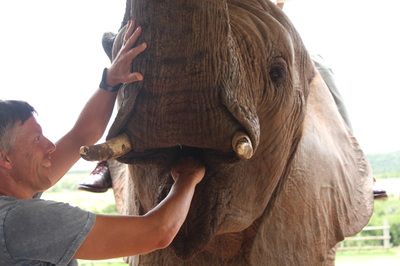



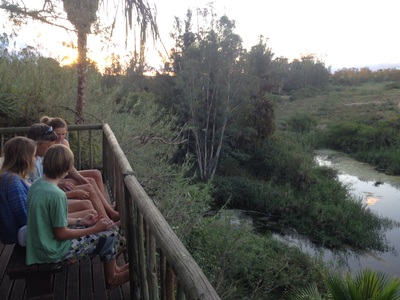

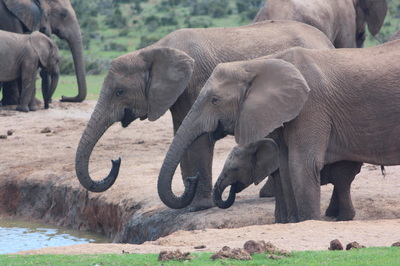

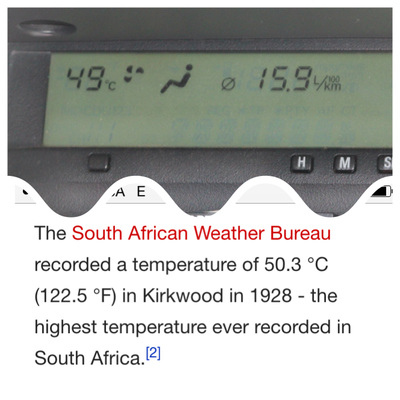
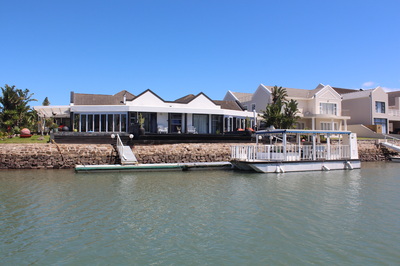
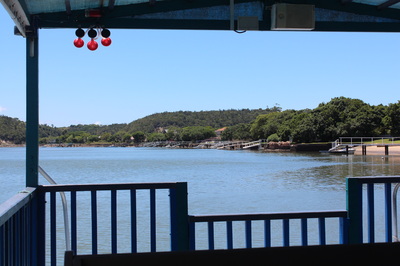
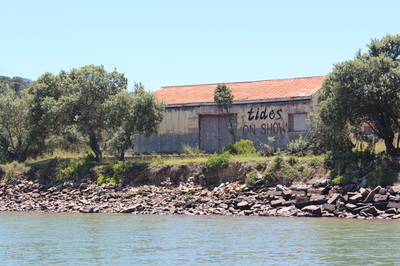
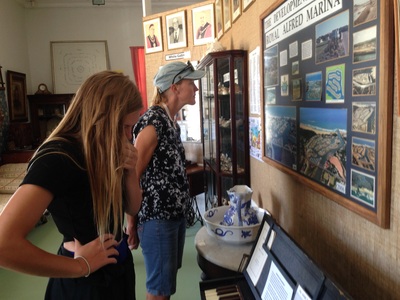
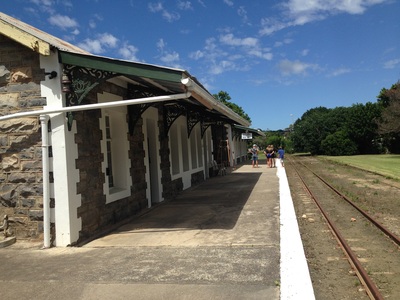

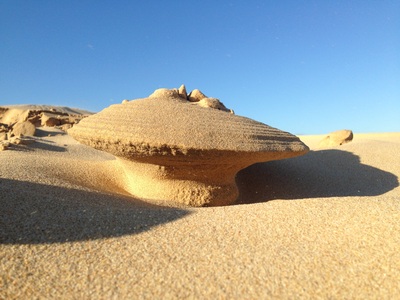
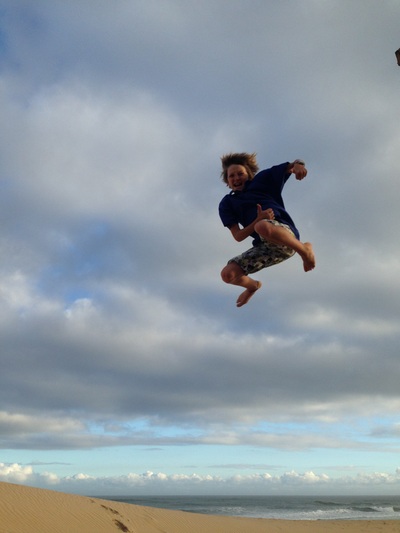
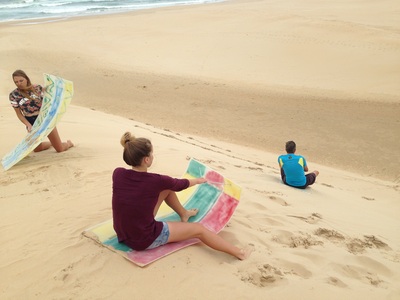



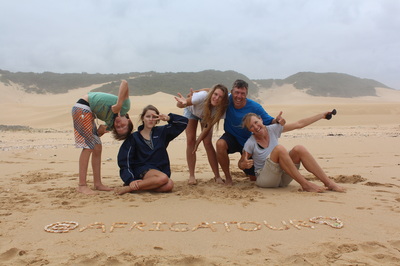





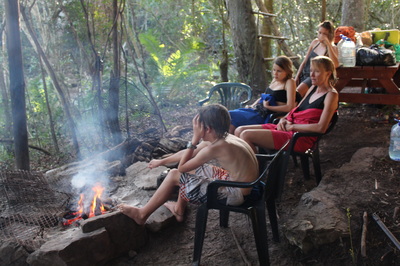

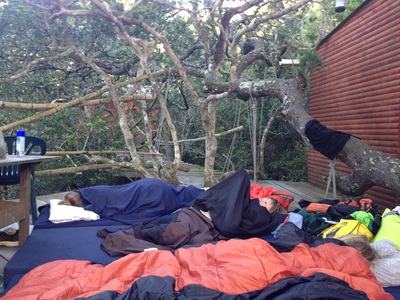
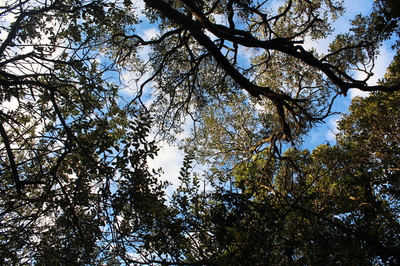


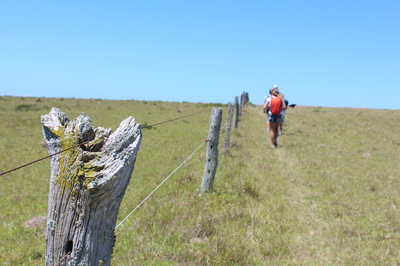

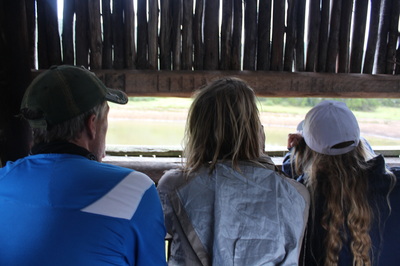

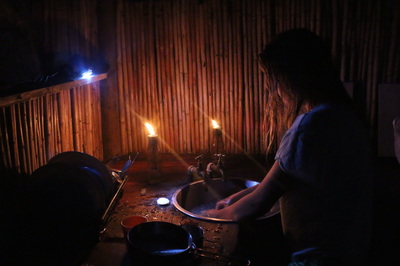
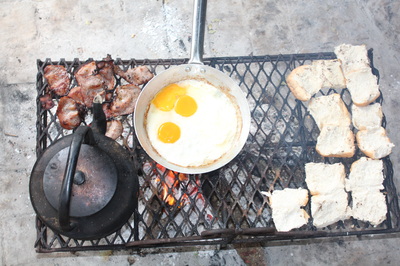

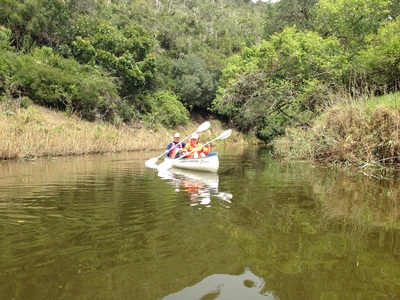
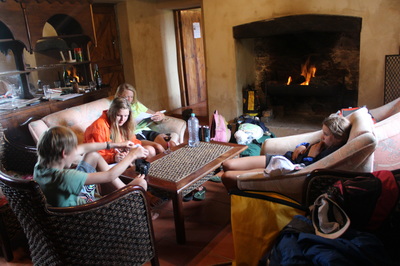

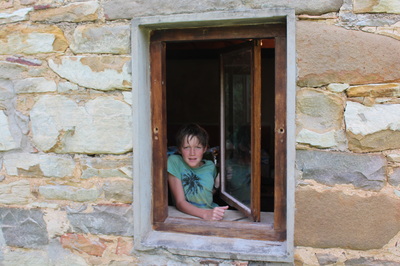
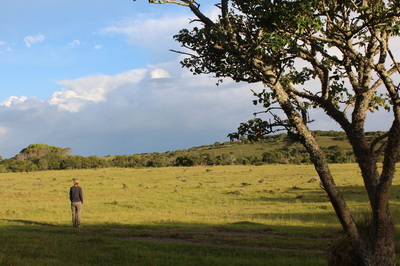


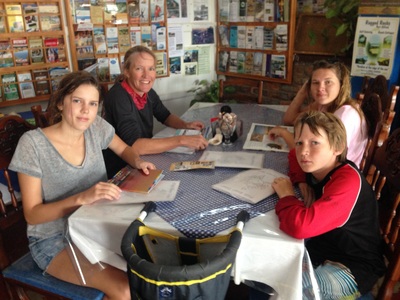

 RSS Feed
RSS Feed
